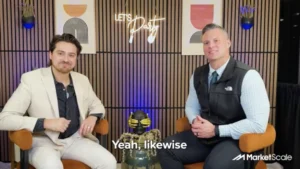A Helpful Guide for Finding the Best Equipment Protection Solution
Protecting your equipment from outdoor elements is crucial during transportation and storage. Corrosion, moisture, UV rays, dust, road grime, rodents, and scratching are all hazards while in transport or storage. Although most equipment seemingly has a tough, impenetrable outer surface, leaving it unprotected will cause damage over an extended period. In this post, we will introduce some protection options available to help stop equipment degradation before it starts. Every piece of equipment is different, so be sure to fully understand your asset’s vulnerabilities before deciding which option is best.
Factors to consider when choosing a protection option for your piece of equipment are (in no order):
- Cost – How valuable is the asset you are protecting? For more expensive and delicate equipment, a more robust protection option is in order.
- UV resistance – Does the protective option prevent sun rays from penetrating the surface of your equipment? The sun’s rays, overtime, can cause the development of micro cracks or delamination. Once this occurs, bare metal is exposed and begins to react with the surrounding environment, resulting in corrosion.
- Durability (lifetime value) – How long is the protection expected to last?
- Fit – Does the protection provide a tight, secure fit, or is it a loose one-size-fits-all option? Hint: a tight fit is better.
- Abrasiveness – Does the protective option have an abrasive inside surface that can cause scratching and etching on your equipment?
- Ease of Installation – How easy is the protective option to install? Does it require multiple people and extra accessories, or is it a simple, one-person job?
- Breathability – Technically speaking – what is the water vapor transmission rate of the protection? Does water remain trapped underneath the covering (causing potential corrosion and mold/mildew), or is it allowed to permeate up and out?
- Water-resistance – how well does the covering block water from passing through?
- Reusability – can you reuse the protective option, or is it a one-time solution?
- Versatility – will this protection work for a variety of equipment or is it tailored to fit only specific piece of equipment?
- VCI Additive – Does the protection option offer VCI integration for added protection? Vapor corrosion inhibiting additives, whether added through an emitter, or integrated in the covering itself can help reduce corrosion by up to 95%. Learn more about VCI technology.
The safest place to store your equipment is indoors. Equipment that is properly maintained and stored in a dry, temperature-controlled room is less likely to accrue damage from corrosion. However, when that option is not available, several solutions can provide protection:
Poly Tarps – Made from polyethylene plastic in a variety of thicknesses, poly tarps are one of the most commonly used methods of equipment protection.
- Pros: cost effective, waterproof, versatile, UV resistant, durable, reusable, one-size-fits-all solution that comes in a variety of sizes
- Cons: loose fitting, abrasive – can scratch and etch surfaces, not breathable, laborious installation that can require accessories such as ropes, tie-downs, bungy cords, etc.
Vinyl Tarps – Made from PVC (polyvinyl chloride) Coated Polyester, vinyl tarps are a more durable version of poly tarps.
- Pros: waterproof, versatile, UV resistant, very durable, reusable, one-size-fits-all solution that comes in a variety of sizes
- Cons: expensive, loose-fitting, abrasive – can scratch and etch surfaces, not breathable, laborious installation that can require accessories such as ropes, tie-downs, bungy cords, etc. Vinyl tarps are also prone to cracking under temperatures below freezing
Canvas Tarps – Typically made from cotton and considered more nature-friendly and breathable. Canvas tarps are thicker and heavier than your standard poly tarp with a grainier texture.
- Pros: water-resistant (when treated with repellant), versatile, durable, strong, breathable, reusable one-size-fits-all solution that comes in a variety of sizes
- Cons: not 100% waterproof, loose-fitting, abrasive, laborious installation that can require accessories such as ropes, tie-downs, bungy cords, etc., known to leave dye stains behind, prone to cracking under temperatures below freezing as well as UV degradation and dry out
Shrink Wrap – Also known as shrink film, this material is a polymer plastic film that shrinks when heat is applied, conforming to the shape of the object it is covering.
- Pros: cost effective, water-resistant, versatile, UV resistant, tight fit, one-size-fits-all solution that can be fitted to almost any piece of equipment, can be infused with Vapor Corrosion Inhibiting (VCI) technology to prevent corrosion
- Cons: not 100% waterproof, not breathable, laborious installation requiring multiple people and extra accessories (heat gun, tape, rope, etc.), one-time use.
Crating – Available in a variety of sizes and thicknesses dependent upon needs, wood crating is a common way to store and transport equipment that needs protection from the elements.
- Pros: UV resistant, durable, strong, reusable, eco-friendly, provides vault-like coverage of equipment, comes in standard or custom sizes, offers interior housing customization
- Cons: high initial cost, bulky and awkward, retains water, acids in some wood can cause corrosion, requires assembly and disassembly
Shrinkable Fabric® – Made up of three layers (outer: polyethylene film; middle: hot melt adhesive; inner: soft non-woven), shrinks when heat is applied, conforming to the shape of the object it’s covering.
- Pros: water resistant, UV resistant, breathable, reusable, easy installation, tight fit, fully customizable to fit the exact dimensions of equipment, soft inner layer prevents etching and scratching, optional VCI additive to prevent corrosion
- Cons: Only available in large quantity orders, costlier due to custom design, water intrusion could occur at sewn seam
It’s essential to understand the different methods of keeping valuable equipment safe from environmental degradation during transportation and storage. Using any one of these equipment protection options can help to prevent the cost of potential equipment repairs or total replacement by limiting exposure to the elements.
We hope you found this information helpful! For any additional questions don’t hesitate to contact us.









